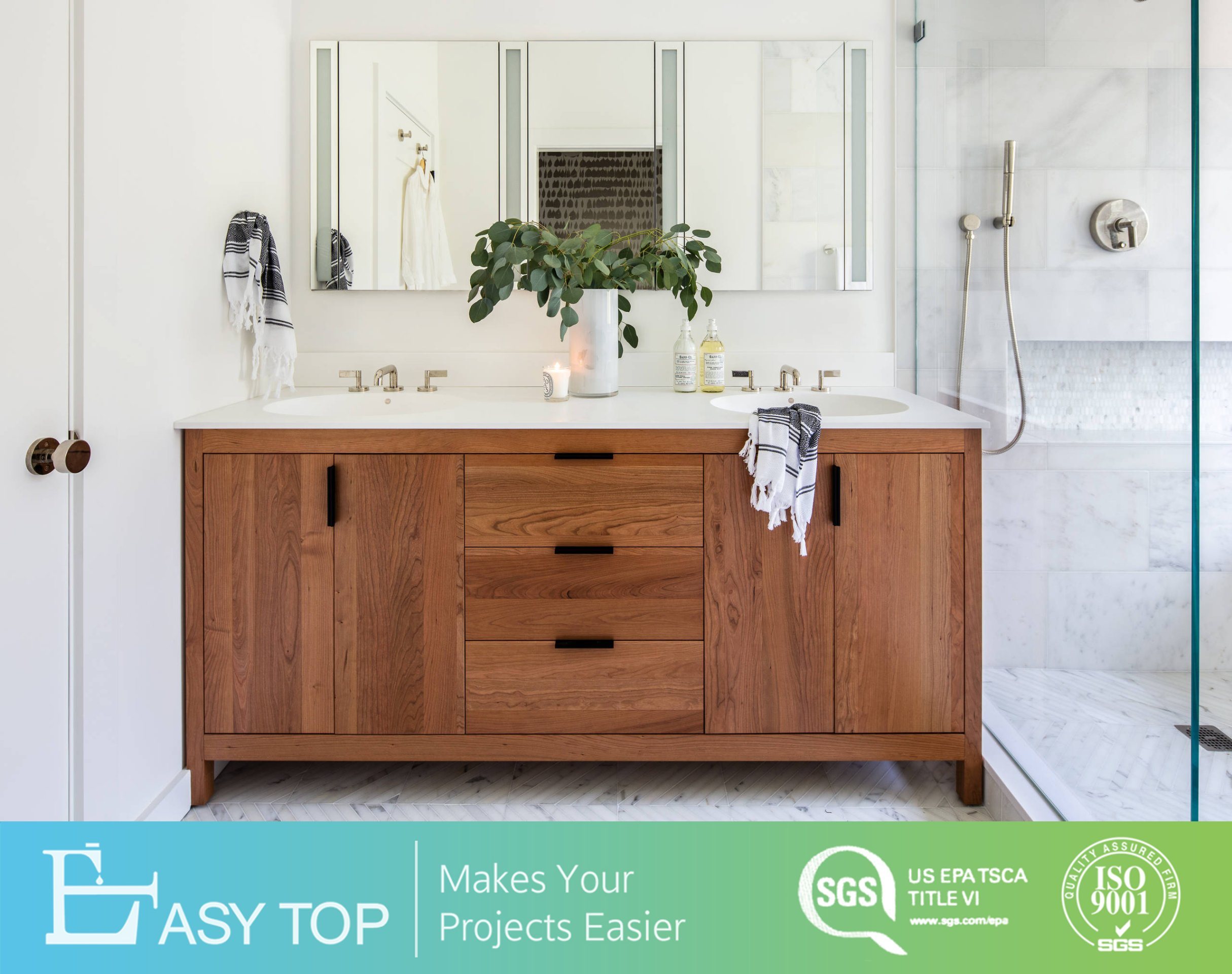Understanding Bathroom Cabinet Needs: Best Type Of Wood For Bathroom Cabinets

Bathrooms are unique environments that present specific challenges for cabinet materials. High humidity, frequent temperature fluctuations, and exposure to water create demanding conditions that can compromise the longevity and appearance of cabinets. Choosing the right wood for your bathroom cabinets is crucial to ensure durability, moisture resistance, and a long-lasting, attractive finish.
The Importance of Moisture Resistance and Durability, Best type of wood for bathroom cabinets
Moisture resistance is paramount in a bathroom environment. Wood is susceptible to warping, swelling, and rotting when exposed to excessive moisture. Durable woods that can withstand these conditions are essential for bathroom cabinets.
Popular Wood Choices for Bathroom Cabinets

Best type of wood for bathroom cabinets – When choosing wood for bathroom cabinets, it’s crucial to select a species that can withstand the unique conditions of this space. High humidity, moisture, and frequent temperature changes can damage wood over time. Therefore, understanding the properties of different wood types is essential for ensuring your cabinets’ durability and longevity.
Popular Wood Choices for Bathroom Cabinets
Here are some of the most popular wood choices for bathroom cabinets, along with their pros and cons:
| Wood Type | Pros | Cons | Typical Applications |
|---|---|---|---|
| Oak |
|
|
|
| Maple |
|
|
|
| Cherry |
|
|
|
| Walnut |
|
|
|
| Mahogany |
|
|
|
| Teak |
|
|
|
| Pine |
|
|
|
| Redwood |
|
|
|
Alternative Materials for Bathroom Cabinets

While wood remains a popular choice for bathroom cabinets, several alternative materials offer distinct advantages and drawbacks. These materials often provide a more budget-friendly option, enhanced durability, or unique aesthetic appeal.
Laminate
Laminate is a popular choice for bathroom cabinets due to its affordability and durability. It consists of layers of paper impregnated with resin and pressed together, creating a hard, moisture-resistant surface. Laminate comes in various colors, patterns, and textures, allowing for customization to match any bathroom design.
- Advantages:
- Cost-effective: Laminate is generally less expensive than wood, making it a budget-friendly option.
- Durable: Laminate is resistant to scratches, dents, and moisture, making it suitable for high-traffic areas like bathrooms.
- Easy to clean: Laminate surfaces are smooth and non-porous, making them easy to wipe clean with a damp cloth.
- Variety of styles: Laminate comes in a wide range of colors, patterns, and textures, allowing for customization to match any bathroom design.
- Disadvantages:
- Less natural look: Laminate lacks the natural warmth and beauty of wood.
- Can be susceptible to damage: While durable, laminate can be susceptible to chipping or peeling if exposed to significant impact.
- Limited customization: While laminate offers a variety of styles, it may not be as customizable as wood, which can be stained, painted, or finished in various ways.
Melamine
Melamine is a type of laminate that uses a resin-impregnated paper layer that is fused to a substrate, such as particleboard or MDF. It offers similar advantages to standard laminate but is often considered more budget-friendly.
- Advantages:
- Cost-effective: Melamine is even more affordable than standard laminate, making it a highly budget-friendly option.
- Durable: Melamine is resistant to scratches, dents, and moisture, making it suitable for bathroom use.
- Easy to clean: Melamine surfaces are smooth and non-porous, making them easy to wipe clean with a damp cloth.
- Variety of styles: Melamine comes in a variety of colors, patterns, and textures, allowing for customization to match any bathroom design.
- Disadvantages:
- Less durable than laminate: Melamine can be less durable than standard laminate, especially when exposed to high impact.
- Limited customization: Melamine may offer a smaller selection of colors and patterns compared to standard laminate.
Acrylic
Acrylic is a synthetic material that is known for its smooth, glossy finish and high shine. It is often used for bathroom cabinets due to its durability, moisture resistance, and ease of cleaning.
- Advantages:
- Durable: Acrylic is resistant to scratches, dents, and moisture, making it a long-lasting choice for bathroom cabinets.
- Easy to clean: Acrylic surfaces are smooth and non-porous, making them easy to wipe clean with a damp cloth.
- Glossy finish: Acrylic offers a sleek, modern look with a high-gloss finish.
- Colorfast: Acrylic is resistant to fading, ensuring that the color remains vibrant over time.
- Disadvantages:
- Costly: Acrylic is generally more expensive than laminate or melamine.
- Susceptible to heat: Acrylic can be susceptible to heat damage, so it’s important to avoid placing hot items directly on the surface.
- Limited customization: Acrylic is often available in a limited range of colors and patterns compared to laminate or melamine.
Choosing the best wood for bathroom cabinets is a delicate dance between durability and moisture resistance. While teak and mahogany are classic choices, for a modern touch consider exploring the wide range of styles offered by wayfair cabinets for bathroom.
Their curated selection, often featuring engineered woods like MDF or plywood, provides both beauty and practicality, ensuring your bathroom sanctuary remains a haven of tranquility.
Choosing the right wood for bathroom cabinets is a delicate dance between durability and aesthetics. While some might favor the classic elegance of oak, others seek the warmth of cherry. But for those seeking a touch of timeless craftsmanship, perhaps the answer lies in the hands of skilled artisans.
Amish made bathroom vanity cabinets , known for their meticulous attention to detail, often employ hardwoods like maple and walnut, which boast a natural resistance to moisture and offer a unique patina over time. Ultimately, the best type of wood for your bathroom cabinets depends on your personal preferences and the desired atmosphere, but a touch of Amish artistry might just be the secret ingredient to a truly captivating space.